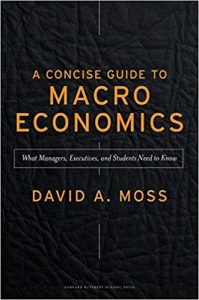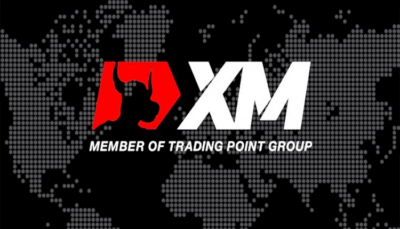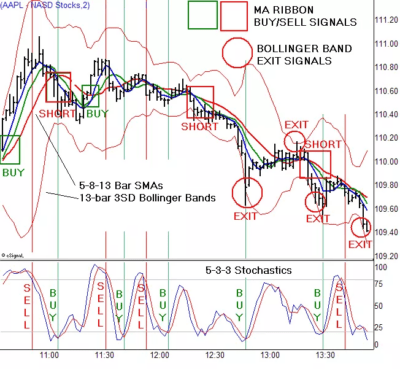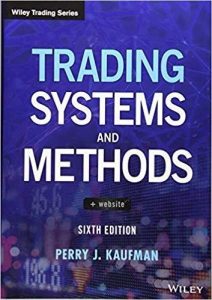Contents:

Possibly a derivative of prime entry 2, if priming something was taken to mean performing an essential preliminary stage. Supporting the hypothesis of an original meaning «load» would be the apparent derivative primage «money paid by a shipper to a captain for care of the cargo,» attested as English in 1476, and as Latin primagium as early as 1297. Compare in the same sense prime-gilt , alongside Middle High German primegelt, primgelt and Middle Dutch priemgelt , with gelt «money.» However, none of these words lead any closer to the origin of the English verb. These example sentences are selected automatically from various online news sources to reflect current usage of the word ‘prime.’ Views expressed in the examples do not represent the opinion of Merriam-Webster or its editors. And Republicans, who see the Biden investigation as a prime political opportunity after a disappointing showing in the midterm elections, recalibrated their efforts to account for Mr. Hur’s appointment. We’re the Consumer Financial Protection Bureau , a U.S. government agency that makes sure banks, lenders, and other financial companies treat you fairly.

2023 could be the year of the recession that never happened – RetailWire
2023 could be the year of the recession that never happened.
Posted: Tue, 07 Feb 2023 08:00:00 GMT [source]
You may have never heard of the prime rate before, but if you have a credit card or you’ve ever taken out a loan, it has affected you. Opinions expressed here are author’s alone, not those of any bank, credit card issuer or other company, and have not been reviewed, approved or otherwise endorsed by any of these entities. All information, including rates and fees, are accurate as of the date of publication and are updated as provided by our partners.
Dictionary Entries Near prime
The opinions expressed are the author’s alone and have not been provided, approved, or otherwise endorsed by our partners. As you can see from the table, the https://forexhistory.info/ rate has returned to the levels see before the Covid-19 recession. Over the longer term, the prime rate remains well below the highs seen over the last 20 years.
When the prime rate goes up, so does the cost to access small business loans, lines of credit, car loans, certain mortgages and credit card interest rates. Since the current prime rate is at a historic low, it costs less to borrow than in the past. “Best in this sense are the borrowers with the least risk of default,” says Jeanette Garretty, chief economist and managing director at Robertson Stephens, a wealth management firm in San Francisco. It’s usually the lowest interest rate banks will charge and is a benchmark to determine interest rates for other products, like lines of credit, credit cards and small business loans.
However, https://forexanalytics.info/s in the prime rate ripple out to regular borrowers. The prime rate will affect the interest rates on personal loans, small business loans, credit cards, and mortgages, which are further affected by the borrower’s credit history. The prime rate is also important if you have any debt with a variable interest rate, where the bank can change your rate. This includes credit cards as well as variable rate mortgages, home equity loans, personal loans and variable rate student loans. If the prime rate goes up, the bank could end up charging you a higher interest rate so your monthly payment on variable debt would increase.

Some jumbo products may not be available to first time home buyers. Interest based on the Prime Rate shall be computed on the basis of a year of 365 days and paid for the actual number of days elapsed . INVESTMENT BANKING RESOURCESLearn the foundation of Investment banking, financial modeling, valuations and more.
Loan
Prime Rate.The prime rate announced to be in effect from time to time, as published as the average rate in The Wall Street Journal. Financial InstitutionFinancial institutions refer to those organizations which provide business services and products related to financial or monetary transactions to their clients. Some of these are banks, NBFCs, investment companies, brokerage firms, insurance companies and trust corporations. It helps identify the riskier assets of the bank, i.e., those loans where the bank has charged a higher interest rate compared to others. CreditworthyCreditworthiness is a measure of judging the loan repayment history of borrowers to ascertain their worth as a debtor who should be extended a future credit or not.

Mortgage A mortgage is a secured loan, with a piece of real estate such as a home or farm acting as… Loan A loan is money lent to you so that you can buy something, for example a car, a house or a… The Fed has already lifted its policy interest rate for the first time since 2018, and it projects additional rate increases in 2022. If you’re in the market for a mortgage, the MoneyWise mortgage rate comparison table will help you find a low interest rate.
The prime interest rate can be a little confusing, so we’re going to break it down for you. Let’s take a close look at what the prime rate is, how the prime rate is determined and how the prime rate affects the interest you pay on your various lines of credit. The two rates move together, and the new increase means higher borrowing costs for car loans, home equity lines of credit and credit cards. Following the housing market catastrophe and worldwide market slump in 2008, the prime rate was in a growth cycle when it reached its theoretical bottom of 3.25 percent. The fed funds rate had been lowered to 0.25 percent, or about zero percent, at the time. Since then, that rate has steadily risen, in lockstep with the prime rate.
Mortgages
It’s also called the base rate and it’s used as a benchmark for other interest rates. As it fluctuates, so should your adjustable rate at the annual reset. The impact is greatest on shorter-term loans; if you have a 30-year mortgage, it might not move much when the prime decreases.
Canada Risks Following the Path of the U.S. on Gun Violence – TIME
Canada Risks Following the Path of the U.S. on Gun Violence.
Posted: Wed, 01 Mar 2023 12:00:54 GMT [source]
As its prime rate in effect at its principal office in New York City; each change in the Prime Rate shall be effective from and including the date such change is publicly announced as being effective. Offer pros and cons are determined by our editorial team, based on independent research. The banks, lenders, and credit card companies are not responsible for any content posted on this site and do not endorse or guarantee any reviews.
The https://day-trading.info/ rate is a rate established by banks that represents the lowest interest rate at which they would lend money to their most creditworthy customers. It is significantly connected with the Federal Reserve’s Federal Funds Target Rate. The current prime rate is 3.25 percent, according to the Wall Street Journal. That said, the Wall Street Journal’s prime rate is one of the most commonly cited averages — the «official source,» so to speak. The Wall Street Journal surveys 10 of the largest US banks and publishes a consensus prime based on their rates. The Journal reports this average prime rate on a daily basis even if the rate hasn’t changed.

Bankrate follows a stricteditorial policy, so you can trust that our content is honest and accurate. Our award-winning editors and reporters create honest and accurate content to help you make the right financial decisions. The content created by our editorial staff is objective, factual, and not influenced by our advertisers. Bankrate follows a strict editorial policy, so you can trust that we’re putting your interests first. The content provided on Moneywise is information to help users become financially literate. Tax, investment and all other decisions should be made, as appropriate, only with guidance from a qualified professional.
What things does the prime rate affect?
You can learn more about the standards we follow in producing accurate, unbiased content in oureditorial policy. Yarilet Perez is an experienced multimedia journalist and fact-checker with a Master of Science in Journalism. She has worked in multiple cities covering breaking news, politics, education, and more.
- Many people assume that the prime rate is tied to the house mortgage rate.
- Interest rates on those products change in sync with the prime rate.
- Click here to uncover the best-in-class picks that landed a spot on our shortlist of the best savings accounts for 2023.
- It’s based on the average prime rate for the 10 largest banks in the United States.
The interest rate on that hypothetical home equity line would have risen from 5% to 5.75% when the benchmark rate increased. Between December 2016 and December 2017, the prime rate rose from 3.75% to 4.5%, but over that same timespan, average 30-year mortgage interest rates fell from 4.16% to 3.93%. If the prime rate rises to 5.25%, your credit card’s new APR will be 18.25%. Lenders don’t have to notify you every time this changes as long as they outline the relationship between your interest rate and the prime rate in the cardholder agreement.
Looking at historical prime rates over time can prove a helpful exercise, as it provides a sense of where current credit and loan interest rates sit by comparison, and how they may change depending on shifting economic climates. Historical mortgage rates tend to wax and wane based on a multitude of factors from inflation and recessions to economic growth and a boom or decline in housing markets. Even factors such as changes in oil prices can affect rates, though, making it well worth keeping an eye on fluctuating prime rates, which can in turn have a marked and significant impact on mortgage interest rates. At the same time, shifting prime rates can also produce a trickle-down effect that impacts the interest rates charged on mortgages, credit cards and other financial instruments. Noting this, it’s important to understand how the prime rate works as you set about reviewing various credit and loan options. As its “prime rate” for US$ demand commercial loans in US$ to Canadian borrowers.
Shall take effect at the opening of business on the day specified in the public announcement of such change. The Fed meets roughly eight times a year to discuss potential adjustments to the federal funds rate, based on the economy’s current conditions. For instance, the Fed announced two emergency rate cutsin March to help combat the negative economic impact of the coronavirus. These rate cuts resulted in a decrease in the federal funds rate, which in change lowered the prime rate and the interest rate for many consumer financial products. The prime rate is important to most of us because it affects a variety of consumer and commercial lending products, including home equity lines of credit, credit cards, loan rates, and more.
- There are no hidden fees and you can get prequalified in just three minutes.
- The higher or lower the prime rate tends to go, the more likely it is that the cost of credit card or adjustable-rate mortgage payments will go up or down as well.
- The exact change in your interest rate depends on how much the prime rate changes — take for instance, the two recent adjustments that resulted in .50% and 1% APR reductions.
- Because a bank’s best customers have little chance of defaulting, the bank can charge them a rate that is lower than the rate charged to a customer who has a higher probability of defaulting on a loan.
- Over the next few decades, the prime rate fluctuated widely, reflecting the ups and downs of the economy and largely mirroring other benchmark interest rates.
As noted above, lenders charge their most creditworthy clients the prime rate for mortgages, small business loans, or personal loans. For others, the prime rate forms the basis or starting point for most other interest rates. The interest these borrowers are charged, which is based on their credit scores and credit histories, is normally prime plus a certain percentage.
While individuals rarely receive the prime, their personal and small business loans, credit card rates, and mortgages reflect the prime rate. If their interest rates are variable, they’ll shift according to changes in the prime rate. Interest rates often rise when the prime rate rises and fall when it falls, but this isn’t guaranteed. Banks choose their own interest rates, and sometimes their rates differ greatly from the prime rate.